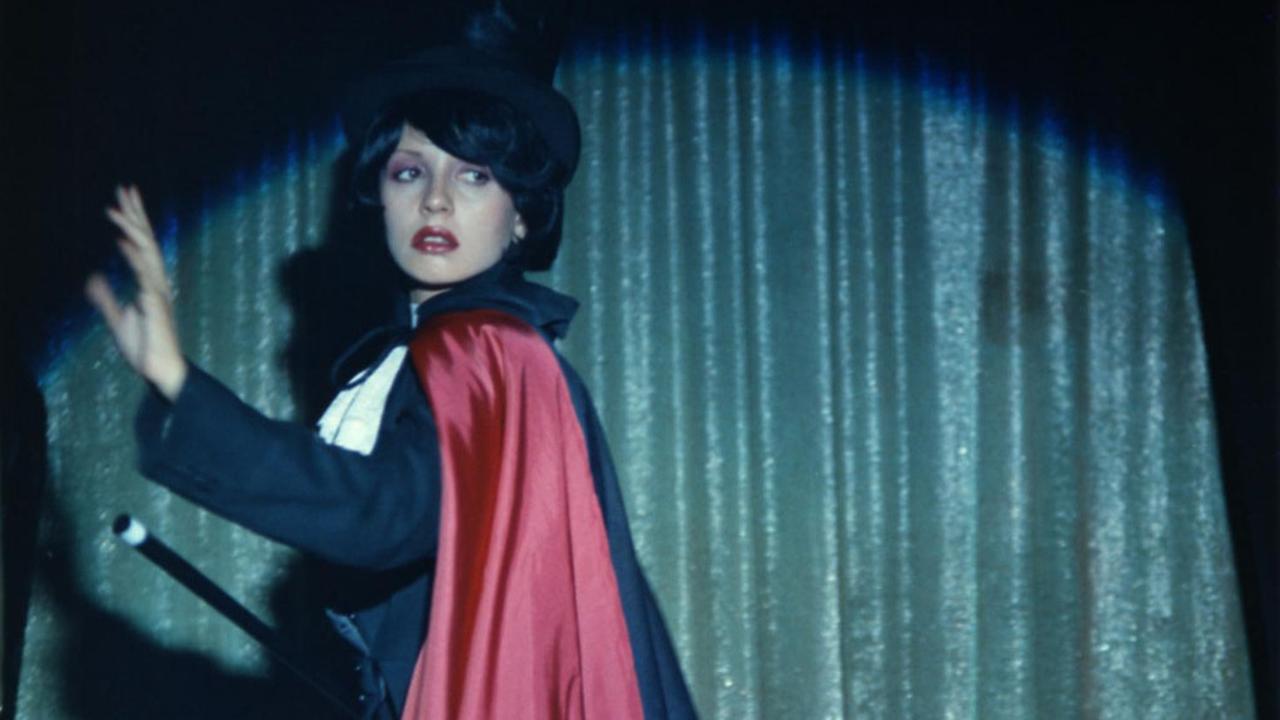
The world of cinema suffered an immense loss recently with the death of Jacques Rivette (1928-2016), one of its greatest auteurs and theoreticians. Born in Rouen, France, Rivette moved to Paris in 1949 to become a filmmaker. But when he submitted his first short to the Institut des Hautes Études Cinématographiques, Rivette had the honour (as did successful directors such as Fassbinder and Spielberg, among others) of being rejected from film school. Rivette never let this stand in his way.
He started frequenting the Cinémathèque Française, deepening his understanding of early cinema while meeting up with François Truffaut, Jean-Luc Godard, Éric Rohmer, Claude Chabrol and other filmmakers. Of course from here on we have cinema history, with this meeting of minds resulting in the birth of French Nouvelle Vague cinema.
In 1953 Rivette began writing for Cahiers du Cinéma. Although now not as discussed or appreciated as other Nouvelle Vague directors, he was regarded by many as being its most thoughtful ist and practitioner.
What brought the Nouvelle Vague together was not only their avant-garde ideas fostered through their camaraderie, but they were also reacting to a stagnating climate in French film which they referred to disparagingly as the “Cinéma du Papa”.
Rivette’s 1956 short Le coup du berger, a story of infidelity revolving around the gift of a fur coat from an illicit lover, is often considered to be the first work of the Nouvelle Vague. This brilliant story, cowritten with Chabrol and cinematographer Charles Bitsch, has cameos in it of Rivette, Chabrol, Truffaut and Godard. Already in this film we have a complex portrayal of conspiracy which will distinguish many of Rivette’s later works.
Rivette’s oeuvre is also marked by meta-drama, theatre being a major component of many of his films. He is a cinéphile’s director, although some of his work is quite accessible. Godard said of him – “Someone like Rivette who knows cinema so much better than I, shoots seldom, so people don’t speak of him. If he had made 10 films he would have gone much farther than I.”
Rivette’s work is also indebted to a love of art and literature, and references Balzac the most often, but also Greek comedies and tragedies, Lewis Carroll and Henry James, among others. He directed twenty features and several shorts and documentaries. The following list explores the most essential works of his amazing cinematic journey.
1. Paris Belongs to Us (1960)
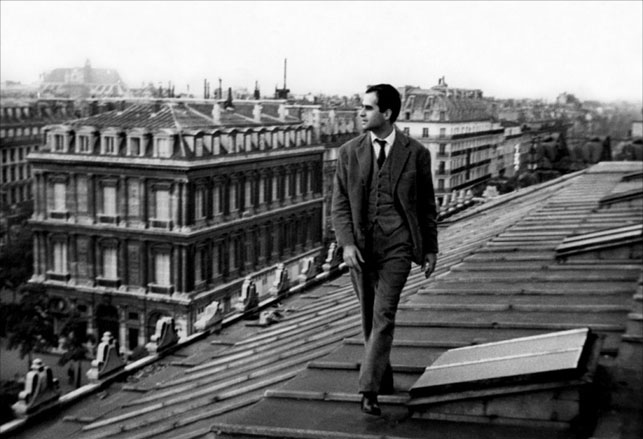
Paris Belongs to Us begins with Anne Goupil (Betty Schneider), a literature student, having a talk with a neighbour. The neighbour is in an hysteric state. She says that Juan was murdered and that everyone will eventually be murdered, everyone in the entire world.
Anne goes to a party with her brother Pierre (François Maistre) and his girlfriend Ida. A painter has painted a portrait of Juan, and we discover that he committed suicide, although it is hinted that a massive conspiracy might be involved. The crowd is a mix of late 50s Paris intellectuals – painters, musicians, journalists, writers and actors.
Anne meets up with a friend Philip (Daniel Crohem) who like her neighbour claims that everyone is in danger. He says the world is ruled in secret by nameless men, and that Juan may have committed suicide “with help”.
He insinuates that Gerard (Giani Esposito), the man directing the production of Pericles she has recently joined, is in danger due to his close association with his girlfriend Terry (Françoise Prévost). She asks Pierre about it, who says that she should not take this talk seriously.
Shot brilliantly in the black and white of traditional noir by Rivette’s frequent collaborator Charles Bitsch, the film began production in 1957 but due to financial difficulties was not released until 1961.
In this film and others such as Godard’s Breathless (1960) we see unfolding a unique and groundbreaking subgenre of mock noir which evolved from the shared admiration Rivette and Godard had developed for directors such as Alfred Hitchcock and Nicolas Ray in their screenings of films at the Cinémathèque Française.
One thing though that distinguishes Rivette’s exploration of noir is that while it is subverted, parodied and metamorphosized, at the same time the feeling of threat and the validation of the character’s hysteria are very substantial, even if the source of the threat remains obscure and ever-shifting. T
his is why the films of David Lynch are much more similar to Rivette’s than to Godard or Truffaut’s explorations of the genre, or such a Nouvelle Vague noir precursor such as the excellent Bob le flambeur (Jean-Pierre Melville, 1956). Another contemporary example similar to Rivette’s exploration of noir is Chris Carter’s The X-Files, now enjoying a renaissance.
Scenes are introduced in intertitles to establish time frames, an added layer of narration and distancing used in almost every Rivette feature. As well, the meta-drama of the Pericles production becomes a major element. In Rivette, the diegesis is almost always fractured, with part of it being more artificial/imaginary.
Anne’s adventure in trying to reveal something of the cabal is a labyrinthine one, constantly instilling fresh questions in the viewer. The notions of conspiracy are very astonishing in how much they mirror contemporary conspiracy theory one finds on the internet regarding The New World Order or Illuminati. “A nice, worldwide concentration camp” Anne is told, regarding the plans of the conspirators. A very intriguing and provocative film, and although Rivette’s first feature, one of his best.
2. The Nun (1966)
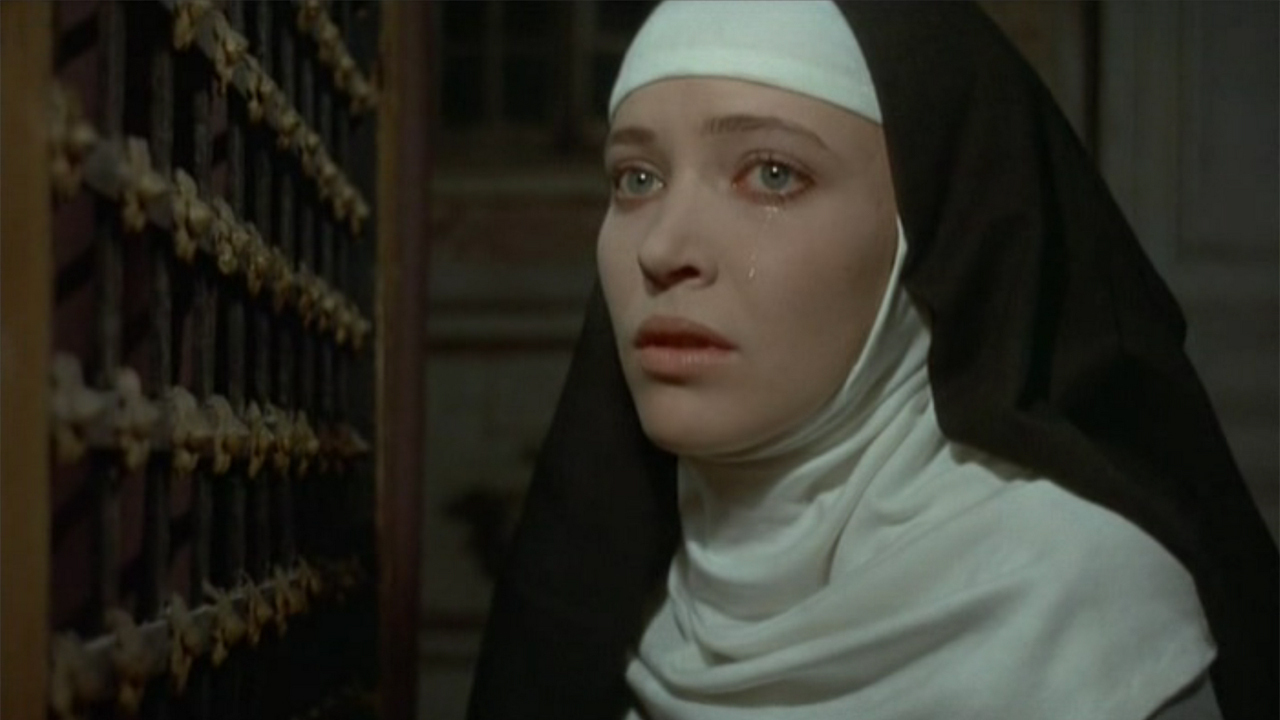
Adapted from Denis Diderot’s 18th century novel, the story follows the sufferings of Suzanne (Anna Karina), who at the beginning is shown with nuns in a wedding dress behind bars, separating her from spectators in society dress of the era.
When asked if she will promise God chastity, poverty and obedience, she refuses. We learn that her mother’s husband is not her real father and her mother no longer wishes to be reminded of her sin. The family is running out of money and sending her to a convent is less worrisome than trying to find Suzanne a husband.
Forced into convent life, the mother superior encourages Suzanne and she becomes the favourite. She prays for strength and although she does not want to be a nun, displays a religiosity. She takes her vows and is no longer a novice.
Suzanne’s mother dies, as well as the mother superior. The new superior, Sister Sainte-Christine, punishes Suzanne for burning her hair shirt. What follows is a portrait of community ostracism and hysteria. Suzanne becomes dead to the community and must beg for scraps. She is humiliated, bound and half-starved.
Suzanne manages to contact a lawyer, Mr. Manouri, who she hopes can free her from her vows. This only further aggravates Sister Sainte-Christine, who becomes convinced that Suzanne is possessed and in need of an exorcism. Although she loses her case, Manouri arranges her transfer to another convent, where we are struck by signs of luxury and comfort.
The mother superior, Madame de Chelles, does not even wear a habit much of the time. If the last mother superior was hateful and sadistic, Madame de Chelles seems quite the opposite.
Eventually it becomes clear that Madame de Chelles has a lesbian obsession with Suzanne, even wailing outside her room at night, although Suzanne herself does not reciprocate, or indeed, even seem to understand the nature of this obsession. She eventually runs away with a monk, who forces himself on her. Then she is shown carrying heavy buckets on a milkmaid’s yoke and working with laundresses.
The Nun is quite severe in its compositions and is perhaps visually the most pure and striking of all Rivette films. It could easily have become pure nunsploitation, but if you have read Diderot’s novel if anything Rivette has toned down the eroticism, maintaining the seriousness and integrity of his subject.
Karina’s performance is truly great, her expression often impassive, and yet so palpable is her suffering. The Nun not only addresses timeless issues regarding the rights of women, but also illustrates so well how profound a gap there can be between faith and its institutions.
3. L’Amour fou (1969)

L’Amour fou is a film clocking in at just over four hours documenting the disintegration of a marriage. It begins and ends with the image of a blank, white stage shot in 16 mm. White is the dominant colour in this film. It is not a reassuring white of comfort, but one which expresses stagnation and a sense of void.
After shots of actors getting ready for a rehearsal of Racine’s Andromaque, the scene shifts to the play’s director Sébastien (Jean-Pierre Kalfon) crouching on the floor while the phone rings repeatedly. He ignores it and turns on a tape reel.
The voice of Sébastien’s wife Claire (Bulle Ogier) streams from the tape – “This desire to find still water again. The courage to separate. In the morning we’ll awaken, to the touch of a thigh… a foot… a caress. You will open in me.” He rewinds the tape but we do not hear him listen to it again. The device recalls Beckett, especially Krapp’s Last Tape.
Reels of audio are played back regularly throughout the course of the film. Claire records everything from random sounds to book passages to the voice of a desperate actress on the phone begging to get an audition with her husband.
If Sébastien listens to the recordings out of a nostalgia, Claire, who withdraws from the theatre production and becomes more and more unresponsive while engaging in acts of self-harm, perhaps makes the recordings simply as an attempt to piece her world together.
The scenes in the theatre are shot in 16 mm, supposedly by a crew documenting the rehearsals, an appealing mixture of faux documentary and meta-drama. At one point the documentary crew has run out of film. The camera person tells Sébastien he doesn’t know what the point is anyway. Is it not idiotic to film someone reciting Racine?
Then some time later, a character on stage is begging Pyrrhus for exile, and the scene shifts to show Claire speaking into the recorder, the scenes outside the theatre shot in 35 mm for contrast. In this context, we are reminded that Claire’s estrangement is a kind of exile. Is it self-imposed then, or did others as she had implied earlier, do her wrong?
Of course none of these questions which arise answer themselves.
What the film achieves beautifully is a portrait of angst in the midst of stagnation, accompanied by an inability to act. The rupture in the narrative created not only by the meta-drama but by the use of two different film stocks highlights the sense of isolation and imprisonment found in Claire’s character.
In the most moving portion of the film, when Claire and Sébastien regain some tenderness for each other, it is no coincidence that in a kind of maniacal state, they tear off wallpaper and knock down walls in their apartment. The apartment becomes a theatre, and as such through its partial destruction and rearrangement merges parts of the diegesis which before were parallel yet distinct.
This image of destruction was very important to Rivette. As one character states in a later film, it is a symbol of the creative act. And in this case, it not only makes for great drama but also becomes, when one realizes its ingenuity, like a scream of joy coming from Rivette himself, as he marvels at his own remarkable formal innovation.
4. Out 1: Noli me tangere (1971)
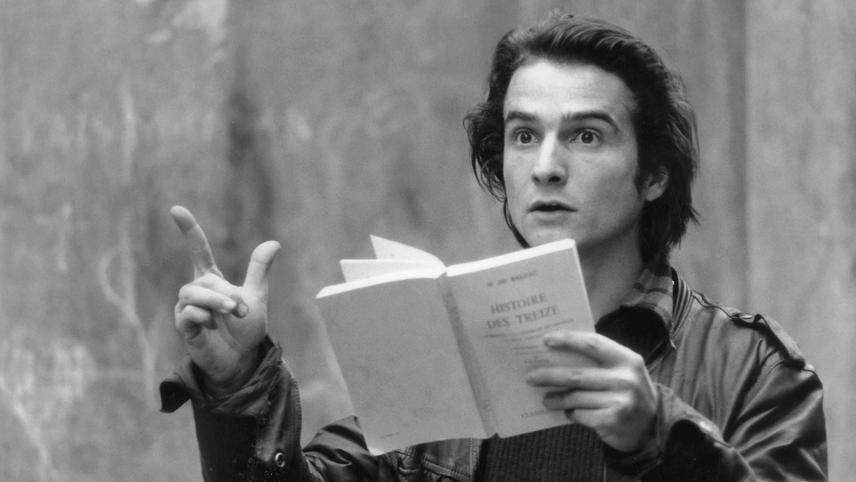
If Rivette showed disdain for a conventional running-time in L’Amour fou, then it is expressed much more so in his Out 1: Noli me tangere, which runs for nearly thirteen hours. Often described as “a cinéphile’s wet dream” or as a rite of passage for the cinéphile, its lack of being fashionable is expressed in the title – the film isn’t “in”, not in fashion, in style, etc.
The “Noli me tangere” was simply a phrase written on the can containing the film expressing the director’s desire for it not to be tampered with, and it became the subtitle. A much shorter version was created dubbed Out 1: Spectre, which although admired by many critics is a much different viewing experience, and as Rivette suggests, is merely a revenant of the original.
The film focuses on two different groups rehearsing productions of Aeschylus, Prometheus Bound and Seven Against Thebes. The Prometheus Bound production is led by Thomas (Michael Lonsdale) and Seven Against Thebes by Lili (Michele Moretti).
In stories running parallel but which become entwined, Colin (Jean-Pierre Leaud), a con pretending to be deaf-mute, begins receiving anonymous letters, some quoting Lewis Carroll’s Hunting of the Snark, which all reference the number thirteen. He begins to believe there is a real-life conspiracy of The Thirteen seeking to control society, a notion planted in his head from reading Balzac.
Colin first makes contact with The Thirteen through Pauline/Emilie (Bulle Ogier) at her “store” where journalists meet, although she does not seem to write herself and it is unclear what, if anything, is sold there.
Likewise another con Frédérique (Juliet Berto) is shown at various escapades hussling men out of their money. One day she looks at Etienne (Jacques Doniol-Valcroze) through his window playing chess with himself. He lets her in, thinking they might have a game. When he leaves the room Frédérique, looking for cash, discovers some letters and steals them. The letters refer to The Thirteen, and Frédérique is determined to use this information to her advantage.
Of course here Rivette returns to the theme of conspiracy mixed with theatre he explored in Paris Belongs to Us. Shot entirely in grainy 16 mm due to its length and budget restrictions gives the film a documentary feel, as well as its long segments of improvisation.
One such segment goes on for nearly a half hour. The Prometheus Bound troupe hums lying on the ground. Then they start writhing and their hums transform into cries, animal sounds, barks and moans.
There are objects scattered about the room which become part of the improvisation, making the scenario reminiscent of events such as Happenings. Members of the group begin focusing on a headless mannequin standing in a tripod stand, smearing it with liquids, and seeming to worship it.
In their unrestrained and ritualistic qualities these improvisations feel primitive and hieratic. When the actors discuss their performances afterwards, they relate how the experience transforms them. They do not even wish to go on with Aeschylus, but would rather create their own play instead.
It is reminiscent of talk on experimental theatre in Louis Malle’s remarkable film My Dinner With Andre (1981) but of course in Malle’s film, we only experience such theatre vicariously. In Out 1, we witness an extended experimental improvisation which explodes into a kind of Dionysian frenzy.
These Dionysian expressions are rather at odds with activities relating to conspiracy in the film, yet somehow it is a convincing whole. Various characters engage in both of these impulses and shift between disparate realms, which is possibly why some of them are mentally unstable.
It can be a difficult work to get through, but as in L’Amour fou the prolonged takes develop sympathy with the characters which otherwise wouldn’t exist. Give it your full attention, and Out 1 has immense rewards for the viewer, one of the great long works of cinema.
5. Celine and Julie Go Boating (1974)
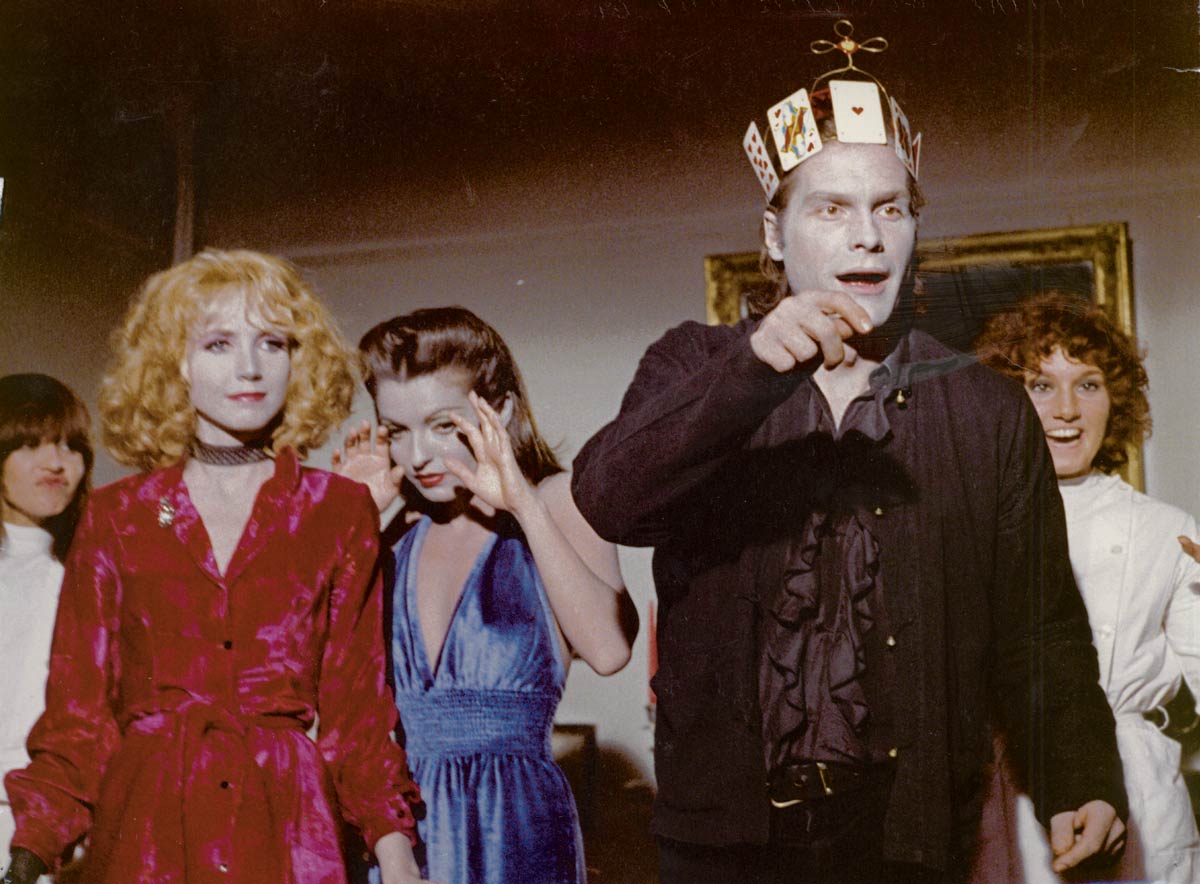
“More often than not, it begins like this” states the title introducing the film, a common Rivette device and signature. But in Celine and Julie Go Boating, story-telling is of utmost importance, illustrated by a pun in the title – to go boating, besides its literal meaning in French, also means to get taken in by a story.
Julie (Dominique Labourier) sits on a park bench drawing a sign in the dirt with her shoe heel, holding a book about magic. She mutters something into the air, and the vista of the park is cross-cut with images of a giant house.
Wind begins blowing, and it seems that something magic is happening. Céline (Juliet Berto) appears, wearing a boa and long scarf, dropping her sunglasses. Julie picks them up and tries to get her attention to no avail. Céline then drops her scarf which Julie gathers, and Julie continues following her around Paris. Julie finally catches up with her the next day, giving her her scarf back.
One day Céline appears on Julie’s steps with a bloody knee. She says people are after her. Céline explains that she was working in a house and that everything had been fine up until a couple days ago. She found a bracelet with the name of a foreign girl on it, and then some passports in a drawer, one with the girl’s name on the bracelet. The photos were missing from the passports.
Céline moves into Julie’s apartment. We discover she performs a magic act as a job. When Julie asks where the house is, she says it was at 7 bis, rue du Nadir aux Pommes, a name with hellish and magical overtones – Road at the Bottom with Apples.
One day while Celine looks through Julie’s trunk filled with dolls, Julie goes to 7 bis, rue du Nadir aux Pommes. The trunk has an old black and white photograph of a big house partially covered with vines in it. Julie rings the bell and the door seems to open by itself. She goes in and the house is shown from further away. It looks exactly like the house in the photograph in the trunk.
Céline and Julie get caught up in a mystery centering on this house, whose inhabitants seem to exist in another time and place. They come out battered and confused, not remembering what has happened.
But they discover that the candies that are always in their mouths when they exit the house bestow them with a clairvoyant ability, allowing them to see events that occur there, which seem to be happening in a kind of eternal recurrence. They must keep returning in order to uncover the events, in order to prevent a child from being murdered.
A fairytale concoction of horror and goodness, Céline and Julie Go Boating makes frequent and astonishing use of cross and jumpcuts which creates a disorienting dream atmosphere but also loans itself so well to the recursive sense of time surrounding the house.
This disorientation, which is frightening at times, is a contrast to the peaceful vision of the house, with its porcelain, baroque fixtures and flowers, and the comforting look of the white nurse uniform worn by both Céline and Julie, as they take turns or simultaneously inhabit the nurse who is a part of the household.
Magic and particularly acts of sympathetic magic are also a theme. The film is that rare thing – a work of high art cinema which is also a tale of the paranormal. It is also notable as are many Rivette films for scoring high points on the Bechdel scale. Rivette was amongst the most feminist of directors in this regard, and Céline and Julie Go Boating is considered to be one of the great works of the “female buddy” genre.
Also including great performances from Bulle Ogier, Barbet Schroeder and Marie-France Pisier, Céline and Julie Go Boating is not a film to be missed.